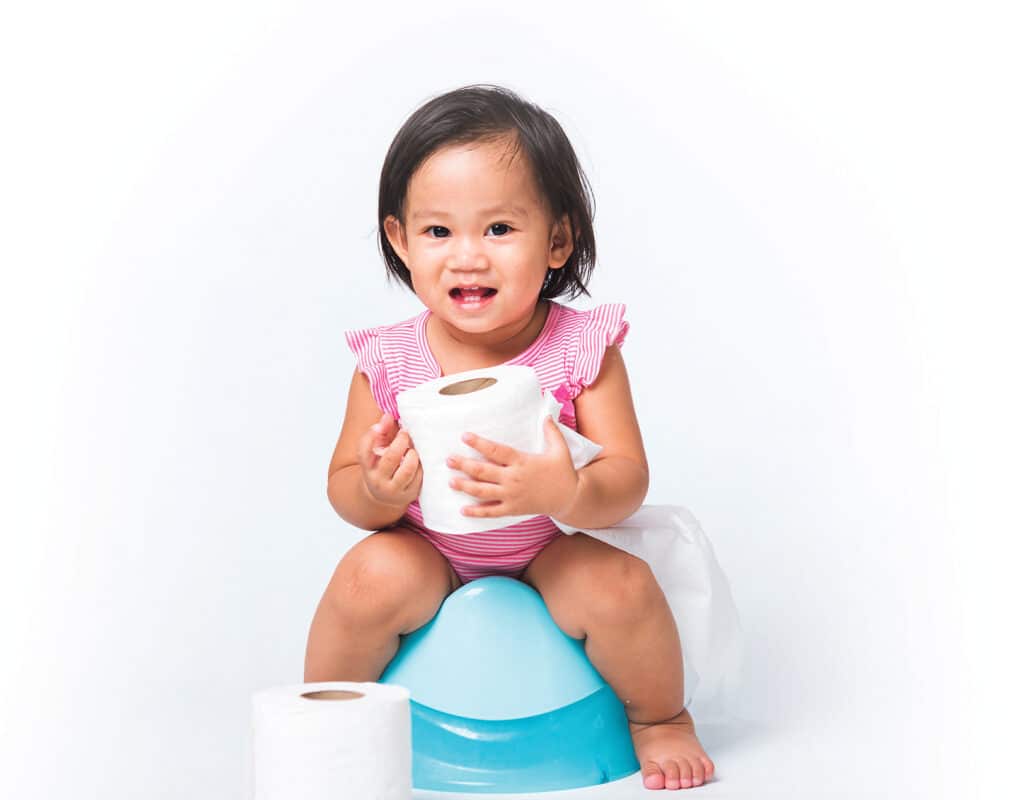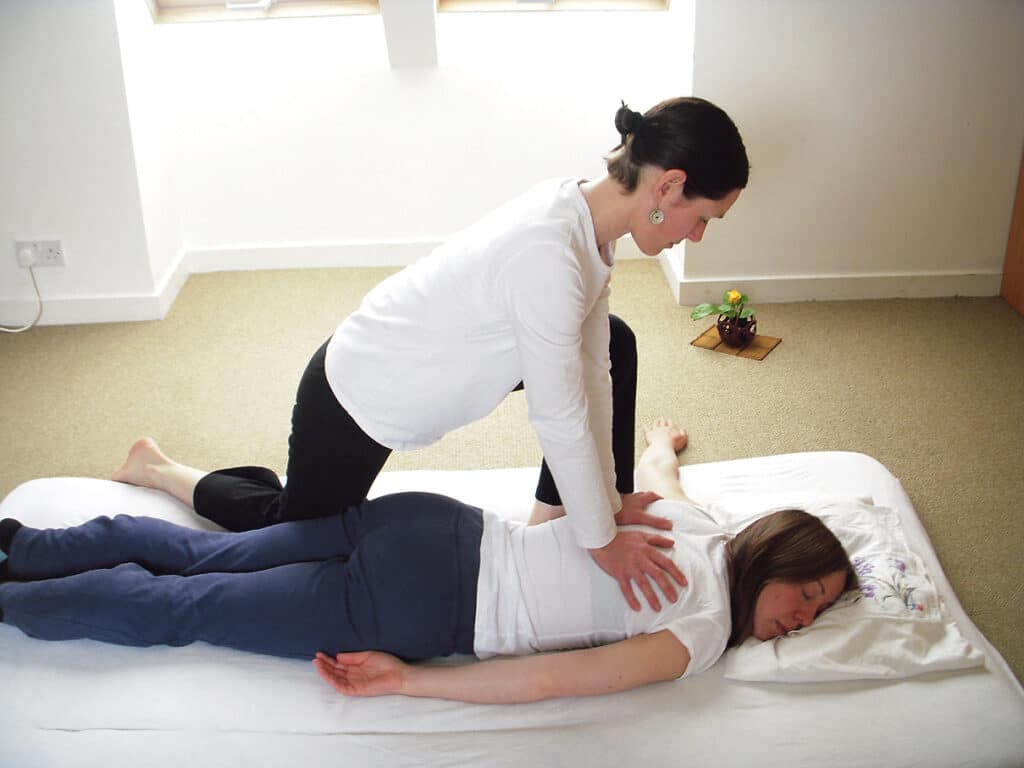
Child Behavior
Sarah Murray is a Paediatric Board Certified Behaviour Analyst (BCBA). Her practice is based in county Cork but she works online supporting many families. Sarah specialises in early intervention for infants and young children, with almost a decade of experience working alongside families of children with developmental delays, autism, and intellectual disability. A child behavioural consultant, Sarah helps families and schools to address challenging behaviour in a positive manner using evidence-based intervention strategies.
arahmurrayabatherapy.com

Tips and strategies to bring success to any tricky situation
We all have a general gist of how to potty train a toddler. Whip off the nappy, plonk them on the potty for what seems like a billion times each day, until they ‘get it’. They will learn over time to use the potty for their number one’s and two’s, and then it’s good bye nappy expense! Well, what happens when they don’t ‘get it’? What do you do when accidents continue to happen, or worse, what if your toddler begins to refuse sitting on the potty, or starts asking for their nappy back?
There are many ways in which toilet teaching can go astray. I’m confident that I’ve encountered the majority of them, from extreme fear of the toilet or potty, reluctance to give up their nappy, selective about where they will go to the toilet, to removing nappy contents and creating something that looks like modern art on the sofa and walls.
Each family that I work with presents with their own unique and individual toileting troubles, but there are some common recommendations that I want to share with anyone who is experiencing the toileting woes.
Stop what you are doing!
If what you are doing with your child is not working, stop immediately. The longer things proceed on a bad foot, the worse this mess will get. It is completely fine to stop, go back to nappies and give yourself and your child breathing space. Take time to assess what went well, what didn’t go so well, and what you can change in order to make things easier for you and your child.
Use powerful
reinforcement
This really ought to be point number one, and if you take nothing else away from this article, please take this one key bit of advice! When you are expecting your child to stop doing something that they have always done since they the day they were born (go in their nappy) and instead do something completely new and alien to them (go in the potty or toilet), you NEED to use all the goodies you have available at your disposal! You need to be providing your child with amazing pay off for doing something that is really tricky for them. Praise and stickers just won’t cut it. You need to create a situation where your child WANTS to release in the potty or toilet, because they WANT that pay off so badly. This way, your child is now extremely motivated to use the potty or toilet and it’s set up as a great thing to be doing! When favourable outcomes happen after a given behaviour, it is increasingly likely that you will see more of this behaviour, so long as you ensure that that favourable outcome occurs straight after. Using the potty or toilet may be your goal that you want to reinforce, but some families may need to start off with reinforcing mere sitting on the potty when asked, building this up as a strong habit before attempting to urinate in the potty or toilet. It is also vital that the bathroom (or wherever you chose to have your potty) is rich in stimulation. Your child does not need to be sitting idle and focusing on what is happening. This will lead to boredom and frustration at having time out from other fun activities. It is okay to watch a video, read a book, play with some toys, just be sure that these are highly motivating and only come out when sitting on the potty and don’t come out at any other time.
Don’t go bare bum!
Many families opt to take nappies off, but fail to replace this with underwear, with thoughts that their child will feel their underwear on their lower half and will begin to use their underwear as a nappy, or they might forget that they no longer have a nappy on, but underwear, and will begin to use the underwear as a nappy. This is not true. I would advise replacing a nappy with underwear that is loose and comfortable (so that it is not an aversive thing, is easily pulled down by themselves and feels very different to a nappy) and grey if possible (to spot any leaks). Involving your child in picking out their underwear can help, or else choosing underwear that have favoured cartoon characters on them can help.
Track progress
When families come to me saying that toileting went off track, I will typically ask how far did they get before calling it quits. How many times did their child use the potty, how many accidents did they have, how often were they sitting their child on the potty? This is very important information to know. Sometimes, we can be put off toilet teaching by a bad spell. For example, your child might have six accidents and one wee in the potty on day one, five accidents and two wees in the potty on day two, five accidents and two wees in the potty on day three and a day full of accidents on day four with no wees in the potty. You may be inclined to give up at this point. So many accidents and barely any wees in the potty. However, in the space of four days, your child has gone from one wee to two wees in the potty, and their number of accidents dropped by one. This is progress! Little progress, but progress nonetheless. One day of no wees and all accidents doesn’t mean that things aren’t moving in the right direction. This is why tracking progress can help spur you on when you’ve both had a rough day of accidents. See what the next day’s data will reveal to you. Progress is never linear, it’s more like a jagged line going up and down, some good days and some bad days, much the same as losing weight. Tracking progress can not only tell you to keep going, it can also tell you when things are not working and can tell you that you need to change up whatever it is that you are doing. I usually recommend five straight days of data before making a decision on whether to change what you are doing.
Medical variables
I always conduct a medical screener before proceeding forward with a toileting assessment and subsequent toileting plan. If there are any medical variables at play, or something doesn’t sound quite right, I will flag these and refer onto a GP. I cannot stress enough how important this is to consider. I had one family come to me and I noticed that things didn’t sound quite right, so I referred them to their GP first to get an all clear. As it transpired, their child ended up undergoing treatment for a previously undetected life-threatening illness related to their bowels. Many children that I work with suffer with some form of gastro-intestinal difficulties, particularly my autistic clients. This is a very important factor to consider, not only due to the medical nature of the condition, but you need to be mindful of the past aversive experiences that have been built up for that child with their stomach and bowel pain and problems. Careful planning needs to be put in place to accommodate such situations.
When in doubt, seek professional help
Many families do not anticipate how difficult toilet teaching can become and they do not ever consider that they might need professional assistance to help their child learn to toilet. It can also be an expense that was not planned for, so with the best intentions, families may stop and start toileting frequently, trying out various techniques, while unbeknownst to themselves, they are creating a pattern for their child of failure and negativity towards toileting. I would always recommend considering getting a professionals advice before starting if you are in a position to do so, and most definitely, if things have gone pear-shaped, reach out and seek assistance and a support plan for toilet teaching.
If you are having concerns about your child’s toileting skills, please feel free to reach out at: sarah.murrayaba@gmail.com


